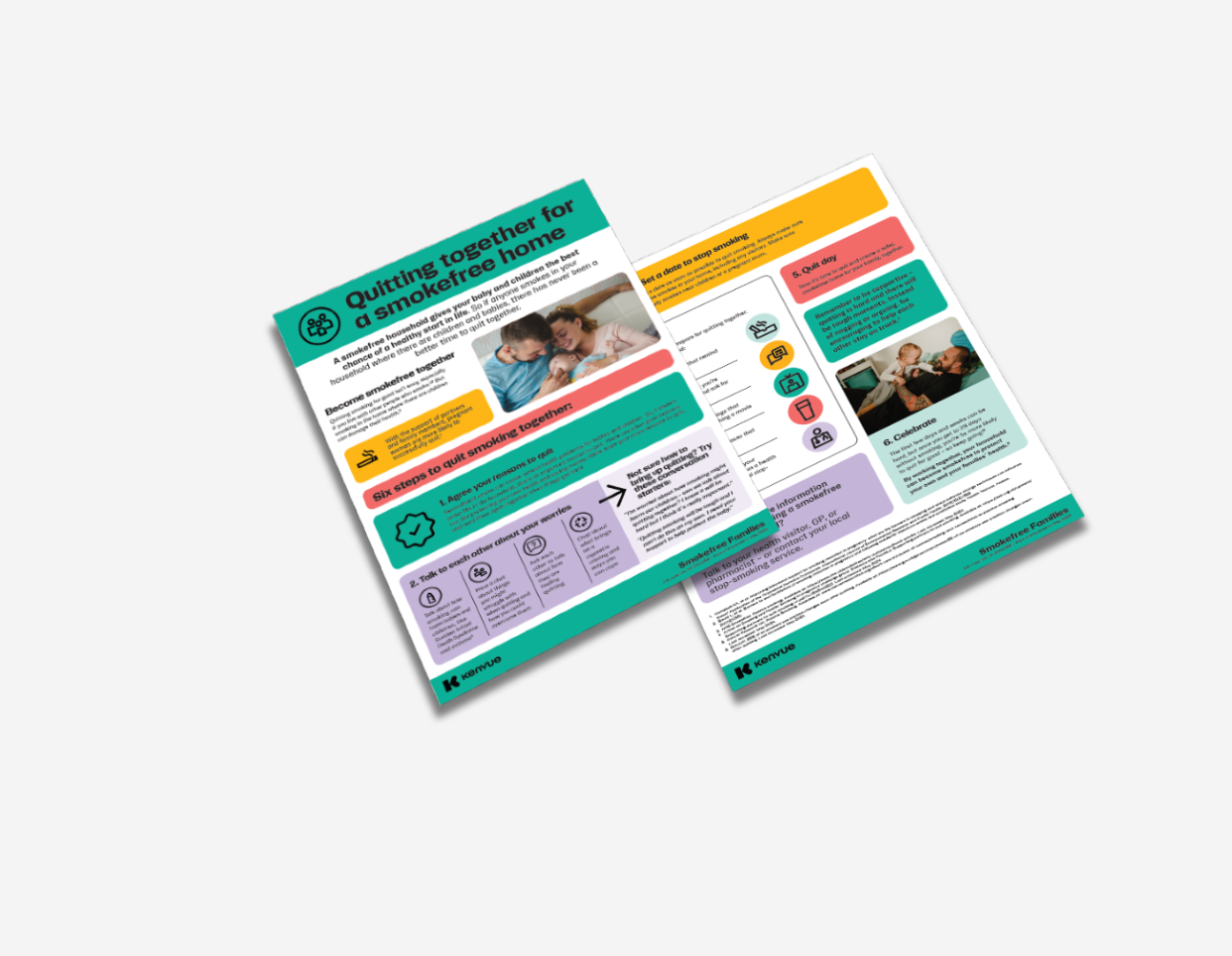
Supporting partners of pregnant women or those with children in the home to become smokefree
Quick links
Reducing the number of smoking families relies not only on supporting pregnant women and new mums to quit smoking, but their partners too. Partners and dads are an important group to focus on when it comes to smoking cessation because:
- Research shows that when someone else in the home smokes as well, women are six times more likely to smoke throughout pregnancy and, if they manage to quit, are more likely to relapse once the baby is born.
- If a partner makes a quit attempt alongside the expectant mum, it increases her chance of remaining smokefree.
- Exposure to secondhand smoke during pregnancy carries much of the same risks as the expectant mum smoking herself1.
| Recommendations for discussing quitting smoking with partners |
|
Reaching men in particular
Becoming a dad (or stepdad) is a significant transition period and can provide a key opportunity to engage fathers in quitting smoking and creating a smokefree home. However, successfully encouraging quit attempts in new or expectant fathers can be challenging:
- A study has shown that some men are more likely to deny or conceal their smoking rather than seek support to quit.
- Men are typically less likely to access healthcare in general than women – especially those in manual or routine occupations who might struggle to take time off work to attend appointments.
- Many interventions designed to reduce exposure to secondhand smoke are targeted towards the pregnant woman herself – and in households with more traditional gender roles, putting the onus on the woman to change their partner’s behaviour can be problematic2,3.
To reach and engage dads and stepdads, the Smoking in Pregnancy Challenge Group recommends that smoking is framed as a household responsibility with a family-wide impact, ensuring they are involved in the process from the outset. Social support from peer groups can also be effective in helping dads and stepdads to quit smoking.2
Case Studies of Dads and Partners who have successfully quit
Watch these videos to find out more about their stories and how they managed to quit!
Interactive HCP Conversation Guide For Videos
To provide further learnings and context to these videos, Kenvue has developed this interactive conversation guide for Health Care Proffesionals. The guide has been created to aid consultations with dads (or partners of pregnant women/new mums) about going smokefree – particularly those who have not yet accessed (or considered accessing) specialist stop smoking support.
It contains key insights from each of the dads’ or partners’ quit journeys, alongside important considerations and example questions you could ask them during the consultation.
Leaflet on how to create a smokefree home
To help partners understand the importance of creating a smokefree home for their family, why not download and give out this leaflet which contains useful facts and tips?
Practical tips for household members
The best way for a partner or household member to protect the pregnant woman and baby is to quit smoking completely. If, however, they are struggling, they can reduce harm to mother and baby by taking the below steps:
- Only smoke outside.
- Keep an umbrella by the door for bad weather, so that they aren’t tempted to smoke indoors if it’s raining.
- Get rid of anything in the home that reminds them of smoking, such as an ashtray.
- Avoid places that they associate with smoking, such as the pub.
Try to be mindful of the social and cultural context |
| For example, those from disadvantaged backgrounds, including people living in temporary accommodation, may find it difficult to smoke outside, so acknowledging these difficulties and discussing practical means to overcome them is key.2 |
Tips for a Smoke Free Home
Second-hand smoke is invisible and lingers and drifts through homes, so even if children are not in the same room, they can still breathe in the harmful chemicals.
Quitting smoking is the best way to create a smokefree environment.
If that is not possible then smokers should:
- Only smoke fully outside and away from children
- Ask visitors or other household members to smoke outside
- Keep an umbrella by the door for bad weather to help avoid smoking indoors if it is raining
- Know that smoking by an open door or window does not reduce harm
- Wash hands and change clothes when coming back inside after smoking
Quitting together for a smokefree home
We’ve developed this visually engaging, six-step guide you can give to your patients to help them quit smoking together with people they live with. As well as practical tips, it contains useful facts on quitting smoking and some helpful conversation starters.


